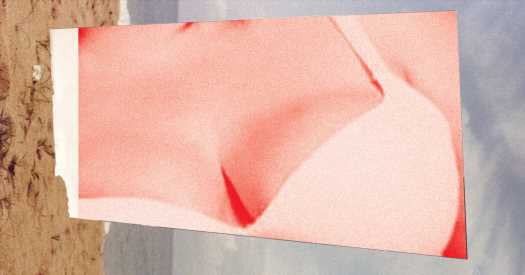
Emily Ratajkowski designs her own. Kim Kardashian has hers custom-made. For pretty much everyone else, shopping for a bathing suit (online, at least) can feel a bit like walking through an endless hall of two-way mirrors: Nothing is as it appears, each of your steps is being watched, and no move brings you any closer to finding a garment that fits.
There seem to be more options than ever. One Google search for swimwear and you’ll be bombarded with ads on every possible platform for brands like Summersalt, YouSwim, Lively and Andie — upstarts aimed at disrupting the market with wider size ranges and mix-and-match separates.
The profusion of choices has come with an expanded marketing lexicon. There are suits cut for “long torsos,” as well as ones offering “minimum,” “medium” and “maximum” support and coverage.
There are detailed guides featuring diagrams and qualitative analyses of each style; some are recommended for specific occasions (“tanning, but around the grandparents,” “an active day at the beach”), while others are assigned archetypes (“extra AF,” “literally everyone”). There are terms like “underbust,” “high shoulder point” and “low hip” — all apparently meant to improve customization.
But for all the talk of inclusivity on these sites, one of the most challenging fit metrics often goes almost unmentioned: bra size.
There is some guidance. Many sites have algorithms and filters that narrow down inventory according to all kinds of measurements. Some even show how swimsuit sizes correspond with bra size.
Still, trying to make sense of all the alpha-numerical designations can make one feel as if trapped in the Math Lady meme, reconciling equations that simply don’t compute. If someone wears a DDD — the average woman’s cup size in America, according to True & Co. — are they a 1, 2 or 3? L, XL or XXL?
Even for those who can decipher the charts and jargon, the sizes themselves are virtually meaningless. “There’s no standard,” said Deborah Beard, the chair of technical design and pattern making at the Fashion Institute of Technology. Instead, companies size their garments with an average customer in mind. As a retailer, Ms. Beard said, “you’ve got to be known for a size.”
From a technical standpoint, she said, larger cup sizes don’t pose any particular problem: “It’s the same construction whether it’s small or large.” Regardless, DD+ swimwear remains a specialty area.
There are some mainstays in the category, including HerRoom, Bare Necessities, Freya, Fantasie and Panache. Each carries a wide selection of extended-size swim tops.
But whereas most companies shift their inventory in accordance with trends — maybe you’ve noticed all the French-cut bikini bottoms? — many fuller-bust companies offer variations on the same styles year after year. They range from too-youthful to outright matronly: bright colors, screaming prints, aggressive underwire, lace and frills, bows, buttons (???). And then there are the “belted” and “skirted” bottoms that tend to be paired with them.
The sporty yet supportive full-bust swimsuit is more elusive; some people, exhausted by the hunt, end up settling for a water-resistant sports bra. Or they might waste a week conducting risk-reward analyses on C-cup and D-cup swimsuits from J. Crew and Lululemon. In years past, both brands have carried extended sizing. This summer, however, those options have all but evaporated. “BRING back D-DD P L E A S E!!!” is a common refrain in their reviews.
“Consumers want brands that take unique body type into consideration,” said Kristen Classi-Zummo, an apparel analyst at the NPD Group who is focused on swimwear. She noted that over the last year, half of the dollar growth in the women’s swimwear category came from top and bottom separates, which allow for a more customized fit.
Ms. Classi-Zummo also pointed out that in an NPD survey, 40 percent of women reported that they were a different size now than prepandemic, which may make online shopping more confusing than it was a year and a half ago.
So I decided to take my search offline. The inventory at most department stores had been heavily picked over. (It was July, after all.) Among the Miraclesuits and Tommy Bahama-style patterns, I couldn’t find anything quite right for me.
As most women of a certain cup size know, the only true true-fit experience can be found in an old-fashioned bra store. Which is how I ended up at the Town Shop on the Upper West Side of Manhattan. Patrons are greeted upon entry and shuttled almost immediately into fitting rooms, where handpicked bras are brought to them, their sizes sometimes judged by sight alone.
A sales associate named Allison pulled an array of high-end bathing suits from brands I’d never heard of, like Shan and Karla Colletto. Some were fitted with hidden underwire, others seemingly made of magic spandex.
As I tried on swimsuit after swimsuit — probably a dozen total — Allison urged me to be open-minded (“Remember,” she said, “it’s a swimsuit, not a cover-up”) and shared bits of confidence-building wisdom: shoulders back, head high, walk like you own the beach. She made a hard sell, even invoking at one point the staggering Covid-19 death toll as a reason to live life to the fullest (i.e., YOLO $300 on a one-piece).
Indeed, as Ms. Classi-Zummo at NPD told me, people are finally rescheduling their pandemic-foiled vacations and, in turn, “splurging on swimwear.”
So? I spent a lot of money on two suits that cannot be returned. I also saved myself several inevitable bouts of buyer’s remorse (and trips to the post office to ship back mistakes). And though I don’t swim particularly well or often, I feel lighter, buoyed by my purchases, as if summer has finally begun … in August.
Source: Read Full Article